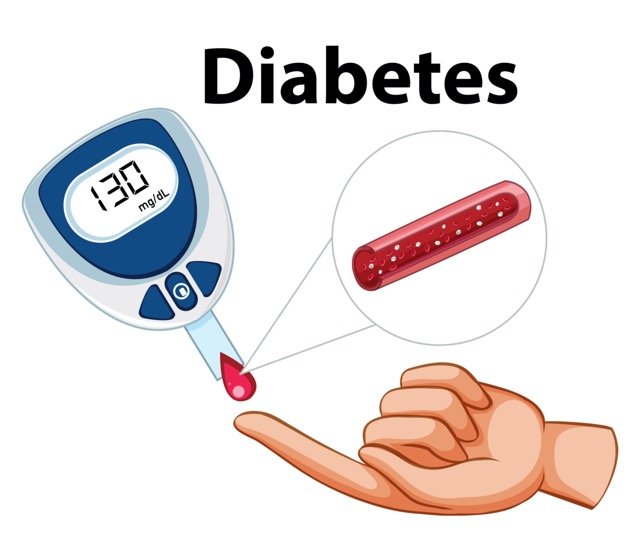Edrophonium (Tensilon) is a reversible acetylcholinesterase inhibitor. It prevents the breakdown of acetylcholine at the neuromuscular junctions by inhibiting the enzyme acetylcholinesterase. It is used in the diagnosis of myasthenia gravis and to differentiate myasthenia gravis from the cholinergic crisis.
Edrophonium (Tensilon) Uses:
- It is used in the diagnosis of myasthenia gravis; differentiation of cholinergic crises from myasthenia crises; and reversal of nondepolarizing neuromuscular blockers
Note: Although the onset of action of neostigmine is delayed, the use of neostigmine (with glycopyrrolate) is usually preferred over edrophonium for the reversal of nondepolarizing neuromuscular blockers due to a longer duration of action.
Edrophonium (Tensilon) Dose in Adults
Edrophonium (Tensilon) Dose in the Diagnosis of myasthenia gravis:
Note:
- Methods vary in regard to the initial and repeat doses.
- However, all regimens utilize a maximum cumulative dose of 10 mg and emphasize that the incremental administration is to help avoid excessive muscarinic side effects.
- Atropine should be available at the bedside during the testing for the rare case in which severe bradycardia, cardiac arrhythmia, or hypotension develops.
- The following edrophonium dosing strategies have been described:
-
- IV: 2 mg;
- if after 90 seconds there is definite improvement, then the test is considered positive and may be terminated.
- If symptoms recur, then may administer another 2 mg dose.
- If there is no definite improvement with the initial dose, then may administer 3 mg and observe the patient for an additional 90 seconds;
- if the test not positive, then may administer the remaining 5 mg and observe the patient for 3 to 5 more minutes.
- OR
- 1 mg (test dose);
- if after 60 seconds there are no adverse effects, then administer 3 mg.
- If after 60 seconds there is no improvement, then administer an additional 3 mg;
- after an additional 60 seconds, repeat a 3 mg dose if necessary for a total dose of 10 mg.
-
Manufacturer’s labeling:
- Current clinical practise might not be reflected in the dosing in the prescribed information.
- IV: 2 mg test dose administered over 15 to 30 seconds; if no cholinergic reaction occurs after 45 seconds then administer 8 mg.
- The test may be repeated after 30 minutes with an IM dose of 10 mg; if a cholinergic reaction develops, administer 2 mg 30 minutes later to rule out a false-negative reaction. If no cholinergic reaction is shown after the initial test dose, terminate testing.
Edrophonium (Tensilon) Dose in the Evaluation of treatment requirements in myasthenia gravis:
- IV: 1 to 2 mg given 1 hour after an oral dose of anticholinesterase; the response will be myasthenic in undertreated patients, adequate in the controlled patient, and cholinergic in the overtreated patient;
- adjust as appropriate.
Edrophonium (Tensilon) Dose in the Differentiation of cholinergic from the myasthenic crisis:
- IV: 1 mg; may repeat after 1 minute.
- Note: Intubation and controlled ventilation may be required if the patient has a cholinergic crisis.
Edrophonium (Tensilon) Dose in the Reversal of nondepolarizing neuromuscular blocking agents:
Note:
- Atropine should be administered with edrophonium (or glycopyrrolate administered several minutes prior to edrophonium) to diminish the cholinergic effects, especially bradycardia.
- IV: Usual dose: 0.5 to 1 mg/kg.
-
Manufacturer’s labeling:
- IV: Current clinical practise might not be reflected in the dosing in the prescribed information.
- 10 mg over 30 to 45 seconds;
- may repeat as necessary up to a maximum cumulative dose of 40 mg
Edrophonium (Tensilon) Dose in Childrens
Edrophonium (Tensilon) Dose in the Diagnosis of myasthenia gravis:
Note:
- Usually administered IV; if not possible, IM or SubQ may be used; however, the results are variable and it may take longer for the reaction.
- Atropine should be available at the bedside during the testing for the rare case in which severe bradycardia, cardiac arrhythmia, or hypotension develops.
- Test dose: Limited data available:
- Some experts suggest an initial test dose to assess for hypersensitivity or sensitivity to muscarinic effects: IV: 0.01 mg/kg.
-
Diagnostic dose:
-
Manufacturer's labeling:
- Infants: IV: 0.5 mg
- Children and Adolescents:
- ≤34 kg:
- IV: 1 mg; if there is no response after 45 seconds, it may be given again every 30 to 45 seconds in 1 mg increments for a total of 5 mg.
- IM: 2 mg
- >34 kg:
- IV: If there is no response after 45 seconds, the dose may be increased by 1 mg every 30 to 45 seconds, up to a maximum of 10 mg.
- IM: 5 mg
- ≤34 kg:
-
Alternate dosing: Weight-directed dosing: Limited data available:
- Children and Adolescents:
- IV, IM, SubQ:
- Initial: 0.01 to 0.02 mg/kg every 30 to 45 seconds up to the maximum dose.
- Note: Typical cumulative dose for a 3 to 5-year-old is 5 mg/dose.
- IV, IM, SubQ:
- Maximum total dose:
- Children and Adolescents: <30 kg:
- 1 mg/kg
- Children and Adolescents ≥30 kg:
- 2 mg/kg or 10 mg; whichever is less
- Children and Adolescents: <30 kg:
- Children and Adolescents:
-
Edrophonium (Tensilon) Dose in the Reversal of nondepolarizing neuromuscular blocking agents: Limited data available:
-
Infants, Children, and Adolescents:
- Usual dose:
- 0.5 to 1 mg/kg/dose IV;
- minimum dose: 0.3 mg/kg/dose
- Doses studied range from 0.1 mg/kg to 1.43 mg/kg/dose.
- Usual dose:
Edrophonium (Tensilon) Pregnancy Risk Category: C
- Consider a lower dose of edrophonium during pregnancy to diagnose myasthenia gravis. This is because of the potential for complications.
Use of edrophonium while breastfeeding
- It is unknown if breast milk contains edrophonium.
- According to the Canadian manufacturer breast-feeding during therapy is a decision that should be made taking into consideration the risks to the infant as well as the benefits to the mother.
Dose in Kidney Disease:
In the manufacturer's labeling, there are no dosage adjustments available.
Dose in Liver disease:
There are no dosage adjustments provided in the manufacturer's labeling.
Side effects of Edrophonium (Tensilon):
-
Cardiovascular:
- Atrioventricular Block
- Cardiac Arrhythmia (Especially Bradycardia)
- Cardiac Arrest
- ECG Changes (Nonspecific)
- flushing
- Hypotension
- Syncope
- Tachycardia
- Thrombophlebitis (IV)
-
Central Nervous System:
- Convulsions
- Dizziness
- Drowsiness
- Dysarthria
- Headache
- Loss Of Consciousness
- Voice Disorder
-
Dermatologic:
- Diaphoresis
- Skin Rash
- Urticaria
-
Gastrointestinal:
- Diarrhea
- Dysphagia
- flatulence
- Hypersecretory Conditions (Gastric And Intestinal)
- Increased Peristalsis
- Nausea
- Salivation
- Stomach Cramps
- Vomiting
-
Genitourinary:
- Urinary Frequency
- Urinary Urgency
-
Hypersensitivity:
- Anaphylaxis
- Hypersensitivity Reaction
-
Neuromuscular & Skeletal:
- Fasciculations
- Laryngospasm
- Weakness
-
Ophthalmic:
- Conjunctival Hyperemia
- Diplopia
- Lacrimation
- Miosis
- Accommodation Disturbance (Spasm)
-
Respiratory:
- Bronchoconstriction
- Increased Bronchial Secretions
- Respiratory Arrest
- Respiratory Paralysis
Contraindications to Edrophonium (Tensilon):
- Hypersensitivity to sulfites or edrophonium.
- Obstructive GI or GU
Warnings and precautions
-
Cholinergic crisis
- Cholinergic crises can be deadly if you overdosage.
- Atropine must always be available for treatment of cholinergic reactions and as an antagonist.
-
Arrhythmias
- Patients with cardiac arrhythmias (eg bradyarrhythmias), should be cautious.
-
Asthma
- Patients with bronchial asthma should be cautious due to the possibility of bronchoconstriction or increased secretions.
-
Myasthenia gravis
- Patients with myasthenia Gravis should not use this agent to reverse nondepolarizing neuromuscular blocking. It may cause muscular weakness.
Edrophonium: Drug Interaction
Note: Drug Interaction Categories:
- Risk Factor C: Monitor When Using Combination
- Risk Factor D: Consider Treatment Modification
- Risk Factor X: Avoid Concomitant Use
Risk Factor C (Monitor therapy) |
|
| Amifampridine | Acetylcholinesterase Inhibitors may enhance the therapeutic effect of Amifampridine. Amifampridine side effects may also be increased. Amifampridine may enhance the therapeutic effect of Acetylcholinesterase Inhibitors. Acetylcholinesterase inhibitor side effects may also be increased. |
| Anticholinergic Agents | Acetylcholinesterase Inhibitors may diminish the therapeutic effect of Anticholinergic Agents. Anticholinergic Agents may diminish the therapeutic effect of Acetylcholinesterase Inhibitors. |
| Benoxinate | Benoxinate's therapeutic impact may be enhanced by acetylcholinesterase inhibitors. Benoxinate's effects, in particular, could last longer. |
| Beta-Blockers | BetaBlockers' bradycardic action may be enhanced by acetylcholinesterase inhibitors. Levobunolol and metipranolol are exceptions. |
| Cardiac Glycosides | Cardiac Glycosides' AV-blocking effects may be strengthened by edrophonium. |
| Cholinergic Agonists | Cholinergic agonists may have a more negative or toxic effect when used with acetylcholinesterase inhibitors. |
| Corticosteroids (Systemic) | The hazardous or harmful effects of acetylcholinesterase inhibitors may be increased. Muscle weakness could become more pronounced. |
| Dipyridamole | Acrylcholinesterase Inhibitors' therapeutic impact can be lessened. |
| Neuromuscular-Blocking Agents (Nondepolarizing) | The neuromuscular-blocking impact of neuromuscular-blocking agents may be lessened by acetylcholinesterase inhibitors (Nondepolarizing). |
Risk Factor D (Consider therapy modification) |
|
| Succinylcholine | Acetylcholinesterase Succinylcholine serum concentrations may rise in the presence of inhibitors. Management: Because of the possibility of long-lasting neuromuscular inhibition, consider alternatives to this combination. |
Monitoring parameters:
- Pre- and postinjection strength (cranial musculature is most useful);
- heart rate,
- respiratory rate,
- blood pressure
How to administer Edrophonium (Tensilon)?
Injection:
- It can be injected subcutaneously, intravenously, or both.
- refer to individual indications in dosing for detailed recommendations.
Mechanism of action of Edrophonium (Tensilon):
- It prevents the destruction by acetylcholinesterase of acetylcholine.
- This enables impulse transmission across the myoneural joint and increases cholinergic responses like miosis and tonus in the skeletal and intestinal muscles.
- Additionally, it causes bradycardia and increases perspiration and salivary gland secretions.
The onset of action:
- IM: 2 to 10 minutes;
- IV: 30 to 60 seconds
Duration:
- IM: 5 to 30 minutes:
- IV: 10 minutes
Half-life elimination:
- Infants: 73 ± 30 minutes;
- Children: 99 ± 31 minutes;
- Adults: 126 ± 59 minutes;
- Anephric patients: 2.4 to 4.4 hours
Excretion:
- Adults: Primarily urine (67%)
International Brand Names of Edrophonium:
- Enlon
- Tensilon
- Anticude
- Camsilon
Edrophonium Brand Names in Pakistan:
No Brands Available in Pakistan.







